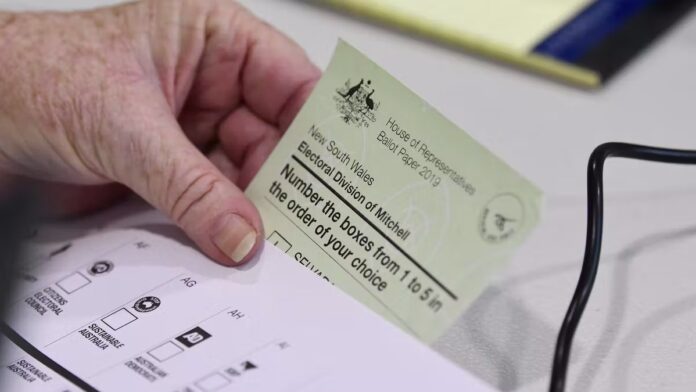Preference voting system or preferential voting system is used to select the winning candidate in federal elections.
The Australian federal election operates on a preferential voting system.
This is different from the first-past-the-post system in the United States, the United Kingdom, Canada, and India, where voters are required to vote for only one candidate on the ballot paper.
This is because in the preferential voting system, the voter needs to cast his vote by writing the number next to all the candidates in the order of his choice on the ballot paper.
Evan Ekin-Smith of the Australian Electoral Commission said voters in the Australian federal election fill out two ballot papers, one for the House of Representatives and the other for the Senate.
Of these, only one representative is elected to the House, while a few are elected to the Senate.
The House of Representatives puts the candidates in the preferred order next to the candidates on the ballot paper so that they can be used more than once during the counting of votes. As a result, it is possible to determine which candidate got the absolute majority, i.e., fifty percent of the total votes.
In the case of the Senate, a candidate is elected only when his or her votes meet the required quota in proportion to the total number of votes cast.
By counting the votes more than once, it is possible to determine whether any of the candidates has achieved the required quota to be elected.
Lan Tulok, an assistant research fellow at the University of La Trobe, said that in order to meet the eligibility criteria for counting your votes, you need to number all the boxes.
Ballot papers will be green for the House of Representatives and white for the Senate on election day.
And the preferred method becomes urgent when it comes to counting the votes among the preferred candidates.
For example, after the vote count, it was found that no candidate has an absolute majority in the House of Representatives. In that case, the candidate with the lowest number of votes is excluded from the count.
These votes then go to the second choice of those voters who identified this dropped candidate as the first choice.
So the counting process continues until a candidate is declared the winner with more than half of the total official votes cast.





